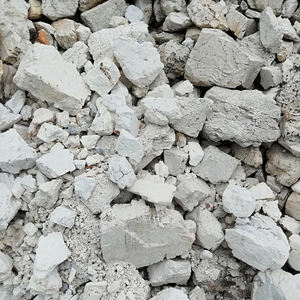Discover Premium Ceramic Products | Durability & Elegance United | Advanced Ceramics
1. Introduction
When it comes to handling extreme heat in metallurgy, semiconductor processing, or advanced ceramics manufacturing, few materials match the performance of silicon carbide. The silicon carbide crucible stands out as a workhorse in high-temperature environments, prized for its exceptional thermal conductivity, chemical inertness, and resistance to thermal shock. But it’s not the only advanced ceramic in the game—silicon nitride, especially in forms like silicon nitride crucible factory outputs or custom silicon nitride heat shields, offers compelling alternatives. In this deep dive, we’ll unpack how these two materials stack up, where each excels, and why choosing the right one matters.

2. Silicon Carbide Crucibles: The High-Performance Standard
Silicon carbide crucibles are engineered from high-purity silicon carbide, often sintered with additives to enhance density and mechanical strength. These crucibles can withstand temperatures exceeding 1600°C and are widely used in foundries for melting non-ferrous metals like aluminum, copper, and zinc. Their standout features include rapid heat transfer, minimal thermal expansion, and resistance to slag and metal corrosion.
Beyond traditional foundry use, variants like rbsic silicon carbide tile blocks or silicon carbide ceramic columns are employed in furnace linings and structural supports. Even silicon carbide burner nozzles and silicon carbide bricks leverage the same base material for durability under cyclic heating.
3. Silicon Nitride: The Precision Alternative

While silicon carbide dominates in raw thermal resilience, silicon nitride ceramics—such as silicon nitride plates, silicon nitride rings, and custom silicon nitride heat shields—offer superior fracture toughness and creep resistance at elevated temperatures. Made from high purity silicon nitride powder (a growing segment in the high purity silicon nitride powder market), these components are ideal for applications demanding dimensional stability and mechanical reliability under load, like in aerospace or semiconductor wafer handling.
Silicon nitride crucibles, though less common than their silicon carbide counterparts, are gaining traction in specialized labs where minimal contamination and high mechanical integrity are critical. However, they typically cost more and are harder to fabricate in large volumes.
4. Boron Carbide vs Silicon Carbide: A Side Note on Hardness
It’s worth briefly addressing boron carbide vs silicon carbide, as both are ultra-hard ceramics. Boron carbide is harder and lighter, used primarily in armor and abrasives, but it’s more brittle and less thermally conductive. For crucible applications, silicon carbide’s balance of hardness, thermal conductivity, and manufacturability makes it the clear winner.

5. Misconceptions: Not All ‘Silicon Carbide Ceramics’ Are for High Heat
A common confusion arises from the proliferation of consumer goods labeled with ‘silicon carbide ceramic’—such as silicon carbide ceramic baking dishes, silicon carbide dinner ceramic plates, or even silicon carbide ceramic butter dishes. While these may contain trace amounts of silicon carbide for aesthetic or minor performance enhancement, they are not true high-temperature silicon carbide crucibles. Most are conventional stoneware or porcelain with silicon carbide added for color (e.g., silicon carbide black ceramic plates) or marketing appeal (e.g., silicon carbide baking dish staub).
Similarly, items like silicon carbide ceramic serving bowls, silicon carbide ceramic pasta bowls, or silicon carbide christmas ceramic platters are decorative or culinary, not industrial. They lack the density, purity, and sintering required for real high-temp performance.
6. Industrial Components Beyond Crucibles
Silicon carbide’s utility extends far beyond crucibles. Silicon carbide tubes—whether used as silicon carbide thermocouple protection tubes, silicon carbide ceramic tubes for high temperature, or even silicon carbide mullite tubes—are critical in furnace and sensor applications. Their resistance to oxidation and thermal shock makes them ideal for harsh environments.
In fluid handling, silicon carbide ceramic piping and silicon carbide ceramic plumbing pipes offer corrosion resistance unmatched by metals. Meanwhile, silicon carbide discs—like silicon carbide ceramic grinding discs or silicon carbide diamond grinding discs for pottery—are valued in abrasive applications due to the material’s hardness.
7. Choosing the Right Material for Your Application
- For melting metals or high-heat chemical processes: silicon carbide crucible is usually the best choice due to cost-effectiveness and proven performance.
- For precision components under mechanical stress at high temps: consider silicon nitride ceramic options like silicon nitride plate or custom silicon nitride heat shield.
- For consumer kitchenware: don’t assume ‘silicon carbide ceramic dish’ means industrial-grade—check specifications carefully.
- For wear parts or abrasives: silicon carbide discs or silicon carbide ceramic sanding discs deliver excellent results.
8. Conclusion
Silicon carbide crucibles remain the gold standard for high-temperature containment, but silicon nitride ceramics carve out a vital niche where mechanical reliability trumps raw thermal conductivity. Understanding the distinctions—not just between these two materials, but also between industrial-grade components and consumer products branded with similar terminology—is essential for engineers, researchers, and procurement specialists. Whether you’re selecting a silicon carbide ring for a furnace or evaluating a silicon nitride crucible factory for lab use, material science matters more than marketing labels.
Our Website founded on October 17, 2012, is a high-tech enterprise committed to the research and development, production, processing, sales and technical services of ceramic relative materials such as Silicon. Our products includes but not limited to Boron Carbide Ceramic Products, Boron Nitride Ceramic Products, Silicon Carbide Ceramic Products, Silicon Nitride Ceramic Products, Zirconium Dioxide Ceramic Products, etc. If you are interested, please feel free to contact us.
